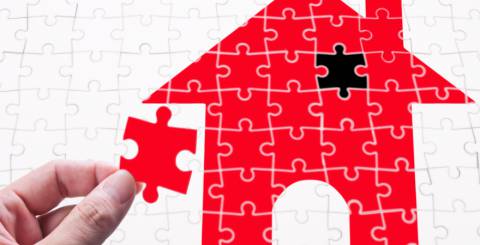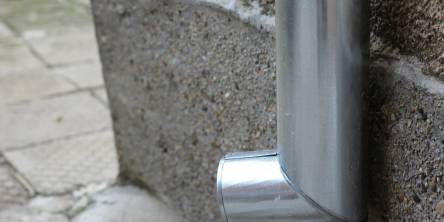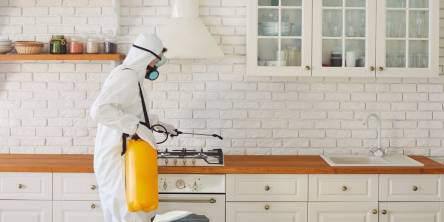Tips for Keeping Your Home in Great Shape

Keeping your home in great shape for years to come
Whether you’re planning on staying in your home for the next ten years or you’re planning on listing in the next ten months, every homeowner needs to know the essentials of home maintenance. Upkeep is what helps your home grow its value while also remaining a safe, comfortable place for you and your family to live. In this article, we’ll review the basics of home maintenance, including how much you should set aside for your maintenance budget and what aspects of your home you need to prioritize over all others.
How much should you set aside for home maintenance?
The answer often depends on who you ask. Many real estate experts, as a general rule of thumb, recommend that homeowners set aside between 1-2% of their home’s value annually for home repair and upkeep. For a home worth $250,000, that amounts to about $2,500 - $5,000 in savings. While this works as a ballpark figure, keep in mind that there is no actual relationship between your home’s value (something determined by the housing market in your area) and its maintenance needs. To get a better idea of just how much you should save, take that general figure and adjust for these factors:
- Your home’s age: Just because your home is newly constructed doesn’t mean it won’t require maintenance and upkeep. But, if you own an older home or a historic property, expect to need more to cover the cost of replacing things as they wear down or break.
- Your home’s size: A smaller home will require less upkeep than a larger home, the latter of which has more pipes, more wiring, more flooring, and puts more wear-and-tear on your cooling and heating system.
- Your climate: Different climate zones in the United States pose different challenges to homeowners. In the Northeast and Midwest, homeowners need to be wary of the wear-and-tear caused by winter ice and snow. In the desert Southwest, exterior paint and roofing materials see more damage from the UV radiation of near-constant sunlight.
When in doubt, our recommendation is that you talk with your realtor or a home expert in your area about how much you should save. Remember: if you’re financially able, saving more than you need isn’t necessarily a bad thing. You can roll that money over, year-after-year, until you have a solid fund built up that can be used for “big ticket” projects such as replacing a roof, installing a new air conditioner, or buying a new washing machine.
Focus on the essentials first
You may remember Maslow’s hierarchy of needs from classes in high school. This chart describes how humans need to have their physical needs—food, water, air, shelter—met before they can focus on their other needs, such as love, esteem, or self-actualization. While your home doesn’t need to find itself, it might be helpful to think about it having a hierarchy of needs, as well. At the foundation of the pyramid, and analogous to the physical needs of people, are the home essentials: structural, roofing, plumbing, and comfort. After all, just like Maslow’s hierarchy, a homeowner isn’t going to have the bandwidth to be overly concerned with things near the top of the pyramid (such as the quality of interior paint, or the aesthetic value of their houseplants) if their roof is leaking or their home has flooded. Your home maintenance strategy needs to be geared around making sure these essential “physical needs” are met first before moving on to spending in other areas.
Roofing
By almost any definition, a roof over your head is what makes your home, physically, a home. Yet, many homeowners take their home’s roof for granted. There are two areas of your roof that require seasonal attention from homeowners:
- The roofing material: Over time, wind, rain, ice, and the sun can all contribute to the deterioration or breakage of your roofing material. Shingles can be torn from the roof and tiles can fall off of it. Even some material loss can result in exposed underlayment. This layer is the last line of defense protecting the roof structure, but will also eventually deteriorate, paving the way for water to get to the structure and into your home.
- Gutters: Any standing water on your roof is bad news. Your gutters play an invaluable role in transporting water off of the roof. However, left unmaintained, they can become blocked by:
- Leaves and tree litter
- Bird’s nests
- Ice and snow
Make sure you clean your roof gutters at least twice per year to ensure that your roof can properly dispel water.
Plumbing
You make use of your home’s interconnected system of pipes and drains on a daily basis. Much like the roof, your home’s plumbing suffers from its own success: it works so well and is so well-hidden that many homeowners don’t give much thought to maintenance. However, caring for the pipes and drains of your home is one of the most important things you can do to prevent a catastrophe down the road. Here’s how you should care for your home’s plumbing:
- Water Heater: At least once-per-year, have a professional plumber flush the water heater tank to remove built-up sediment. This will help the system run more efficiently and reduce the corrosion within the tank. While the plumber is there, have them double-check that the pressure-relief valve is working properly, that the water temperature is set within safe parameters, and that the anode rod doesn’t need to be replaced.
- Pipes: If you live in an area with hard water, you should consider having a plumber install a water softener as a smart, long-term investment in your home. Over the years, hard water can lead to scaling on the inside of your home’s pipes. This can lead to pipe blockages that require extensive re-piping work.
- Drains: Care for your drains by watching what you put down them. Don’t treat your kitchen sink—garbage disposal or not—as the equivalent of a trash can, and never put oils, grease, or coffee grounds down it. These items can collect deep within the sewer line, putting your home at risk of a sewer line blockage and backup.
Cooling & Heating
No matter what part of the country you live in, your cooling and heating systems are a critical part of both the comfort and safety of your home. In the below-freezing winter temperatures of the Midwest, a broken furnace can lead to frozen and burst pipes; in the scorching hot summers of the Southwest, a malfunctioning air conditioner can cause the indoor temperature to quickly become unsafe for people and pets. As a homeowner, it’s imperative that you keep your HVAC systems running right, and that starts with maintenance. Seasonal tune-ups for both your air conditioner and your furnace can make a world of difference for both types of systems. By having a professional inspect and maintain the system in the prior season (spring for an AC tune-up; fall for a furnace tune-up), you can prevent many types of breakdowns and extend the overall lifespan of your air conditioner and furnace.
Build the home maintenance checklist that fits your home
Beyond the three essentials listed above, your home may have individualized needs—such as swimming pool upkeep or exterior surfaces that need to be resealed every other year—that you can place on your maintenance checklist. Soon, you’ll have an extensive list of home upkeep items prioritized by their relative importance to your home, its safety, and its value. Want to learn even more about the essentials of home upkeep? Check out this infographic. It explores some of the potential outcomes of not completing essential maintenance and contains even more recommendations and tips for homeowners.

Similar Articles
When we think of home maintenance, we typically imagine spring and summer as the prime times to tackle repairs and upkeep. After all, the weather is warmer, the days are longer, and outdoor tasks seem far more manageable.
Explore modern facade design, including materials, sustainability, technology, and how facades shape building performance and visual identity.
Choose the right outdoor lighting color temperature to enhance your home’s siding, landscaping, and architecture, including tips for warm, cool, and daylight tones.
Discover what a funeral concierge is and how they help families with personalized guidance, planning, and support during end-of-life arrangements.
Learn how professional custom framing boosts art value and longevity. Get insights on frame styles, mounting, and protective techniques.
Boost drain cleaning efficiency with water jetters. Learn how high-pressure water systems remove tough clogs, reduce downtime, and protect pipes.
Picture this: you wake up scratching, spot a couple of weird red marks, shrug, and get dressed for work.
Here's the thing about building a custom home, it's probably the largest check you'll ever write, and yet so many people dive in without a solid game plan.
In today's fast-paced world, quality sleep has become more precious than ever, making the choice of a luxury mattress one of the most important investments you can make for your health and well-being









